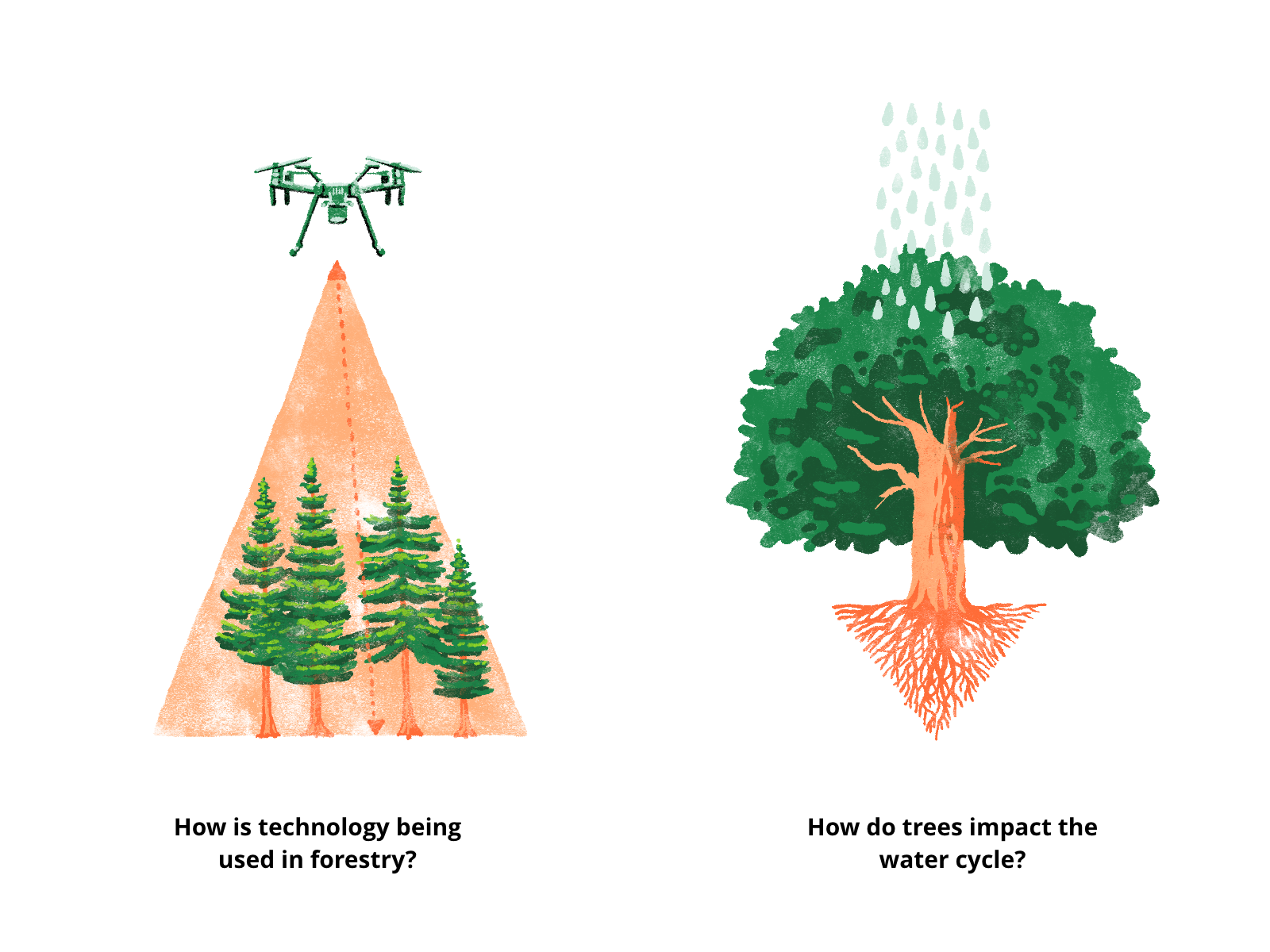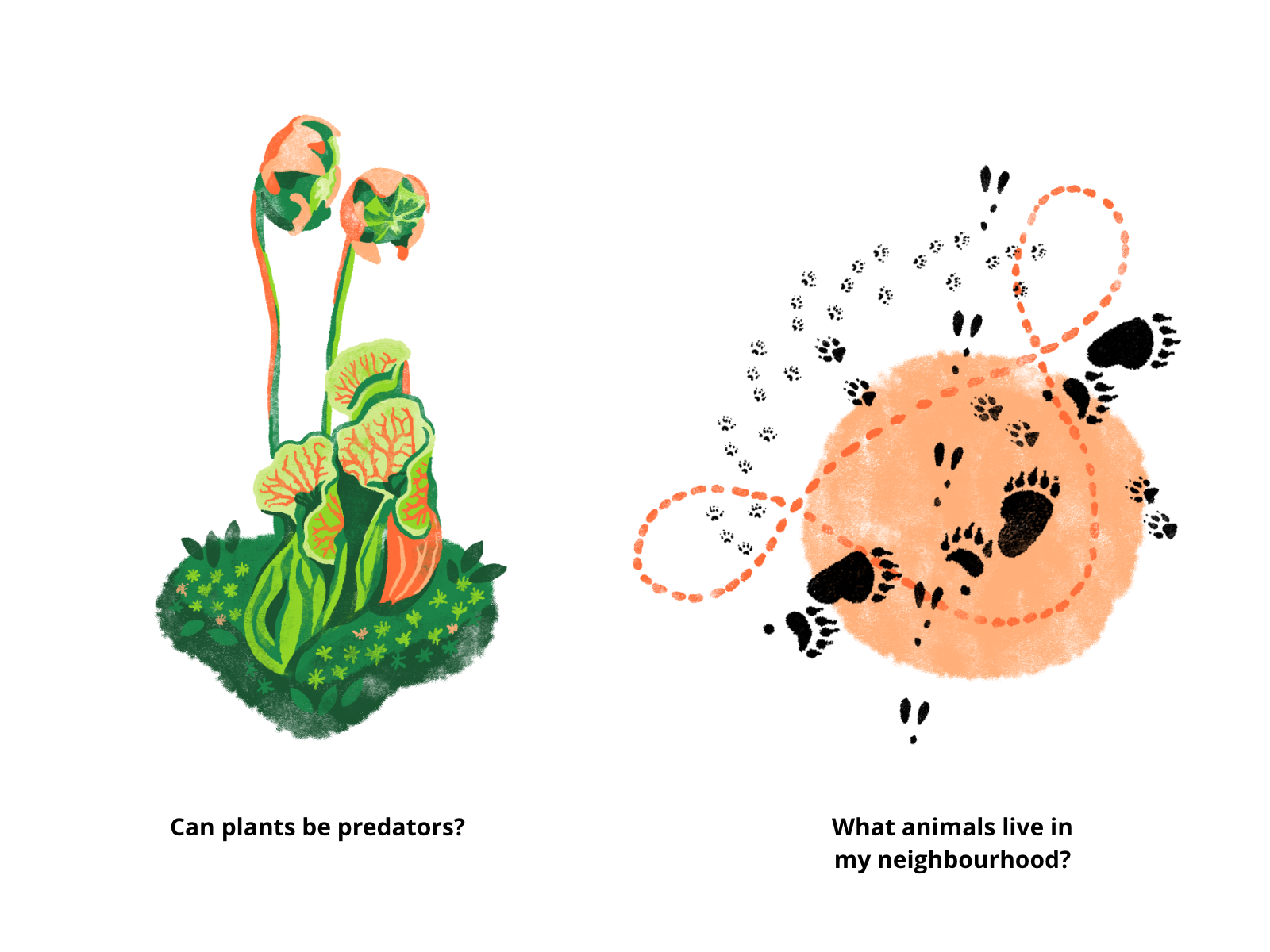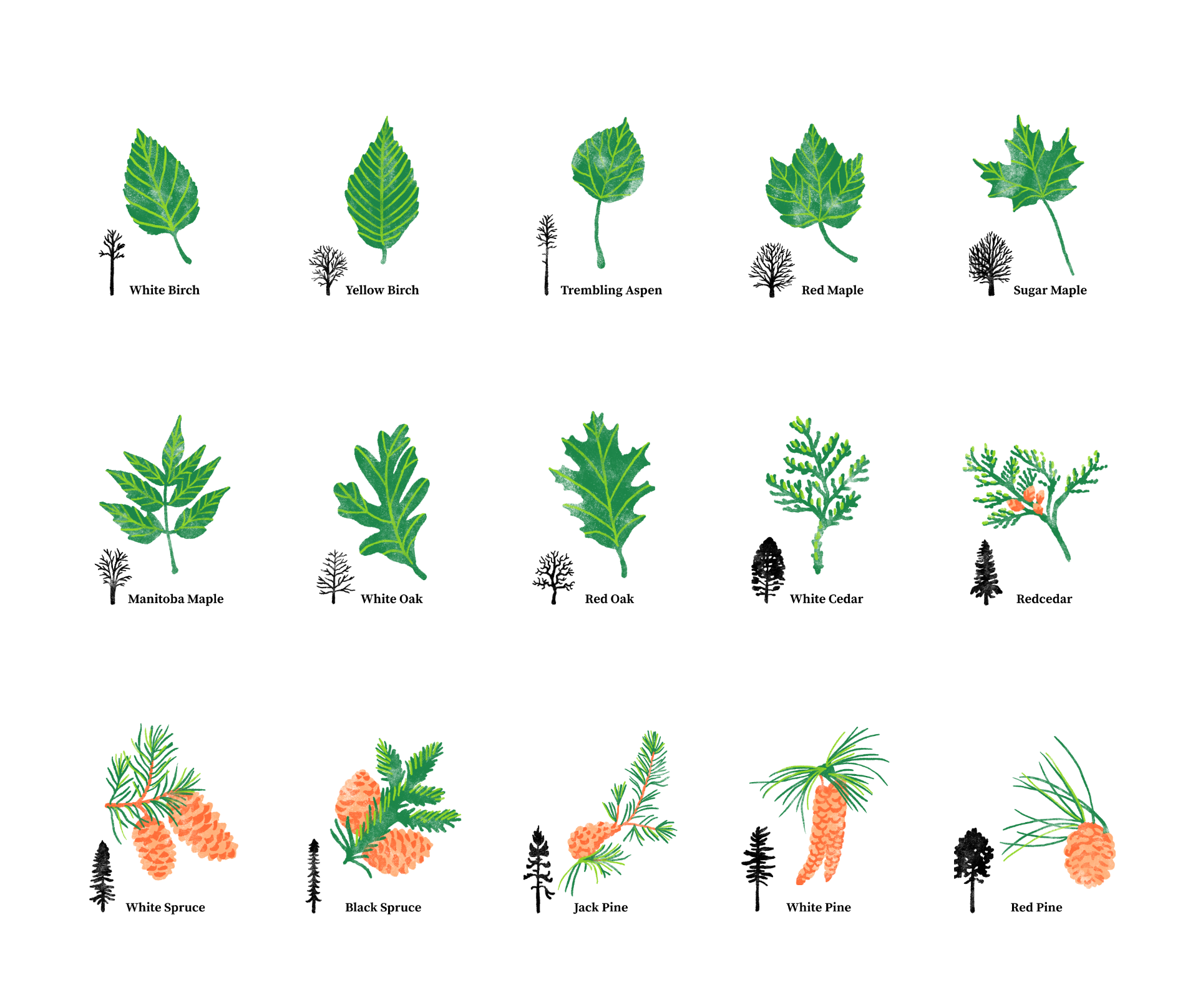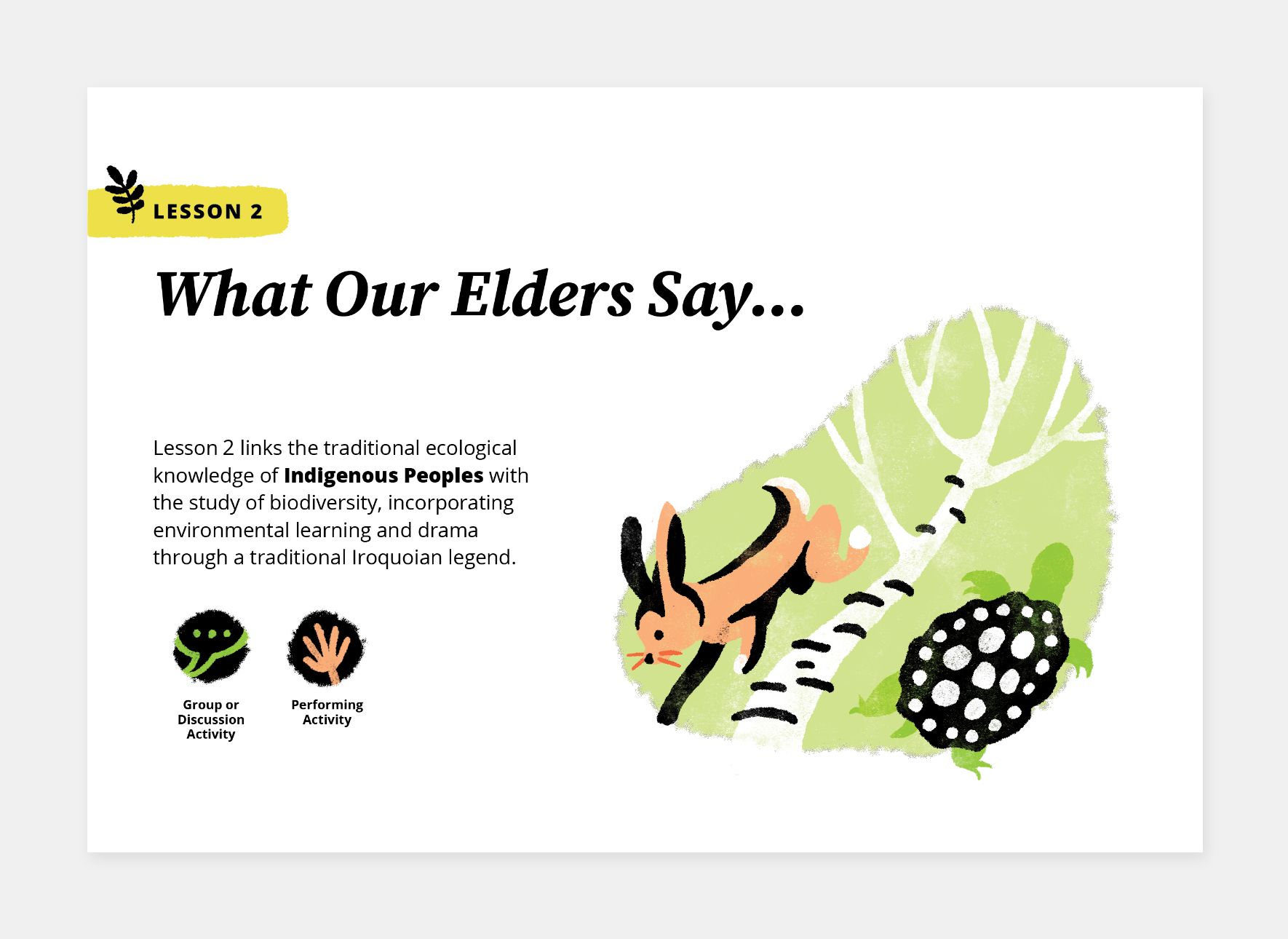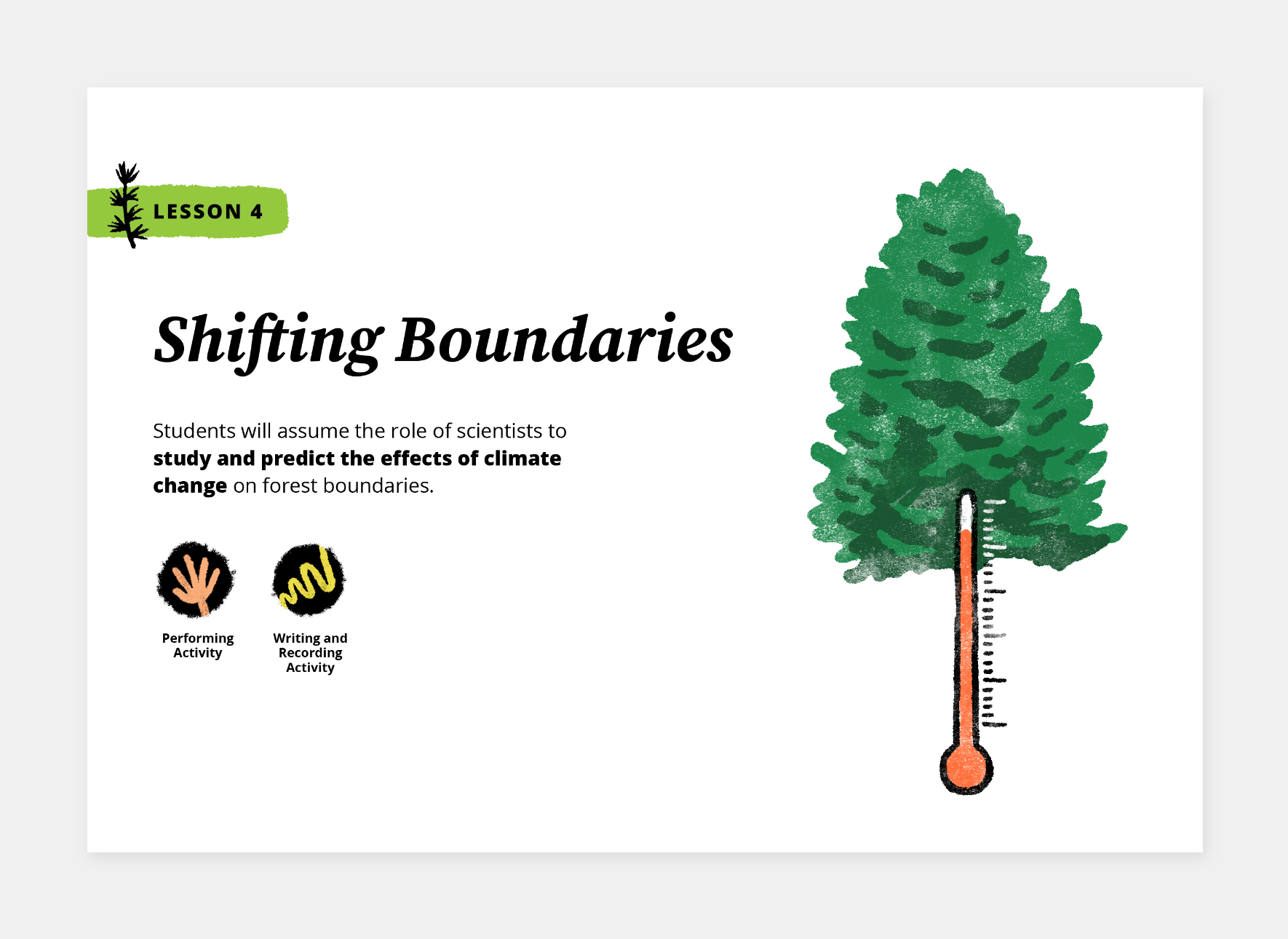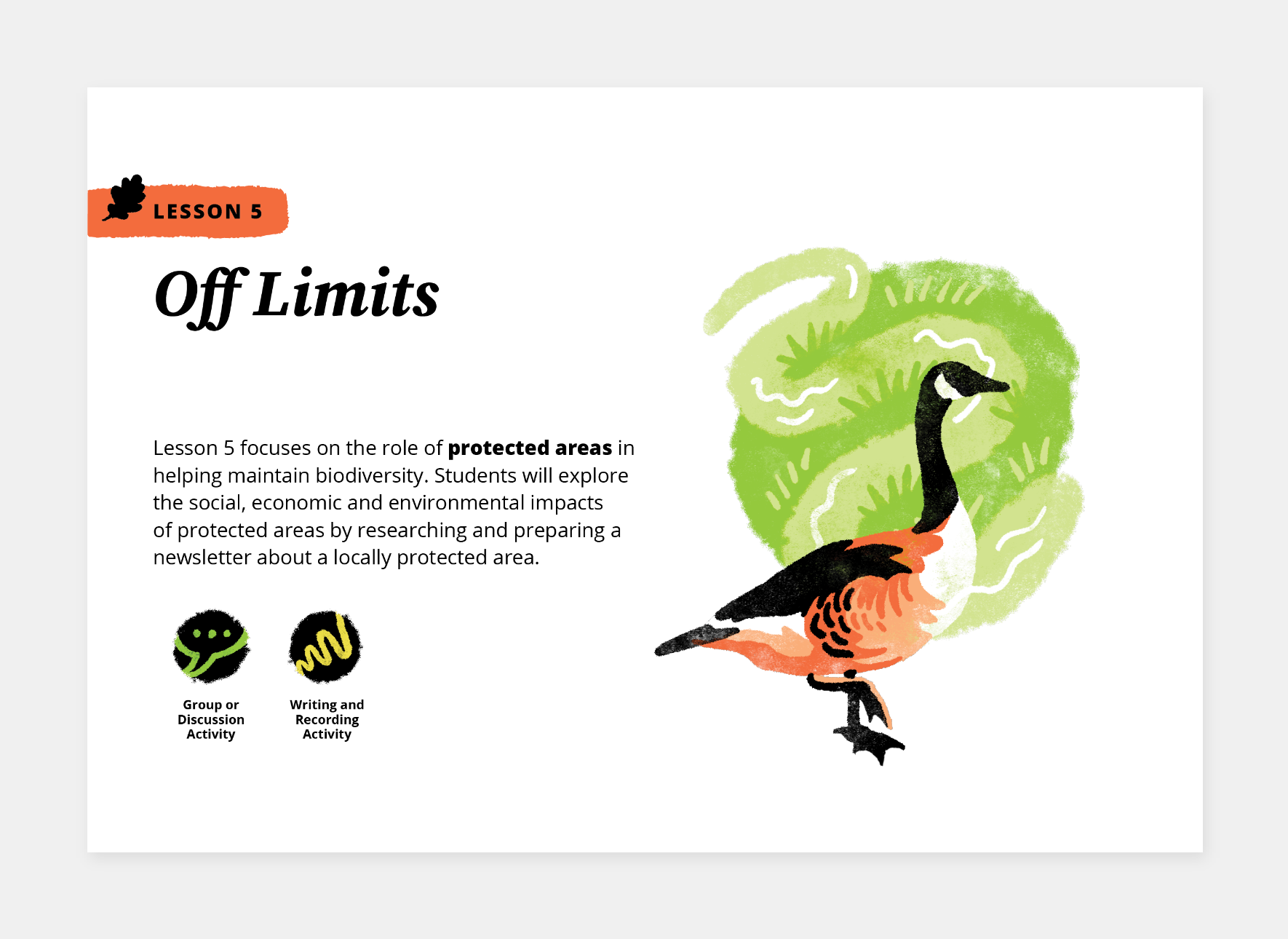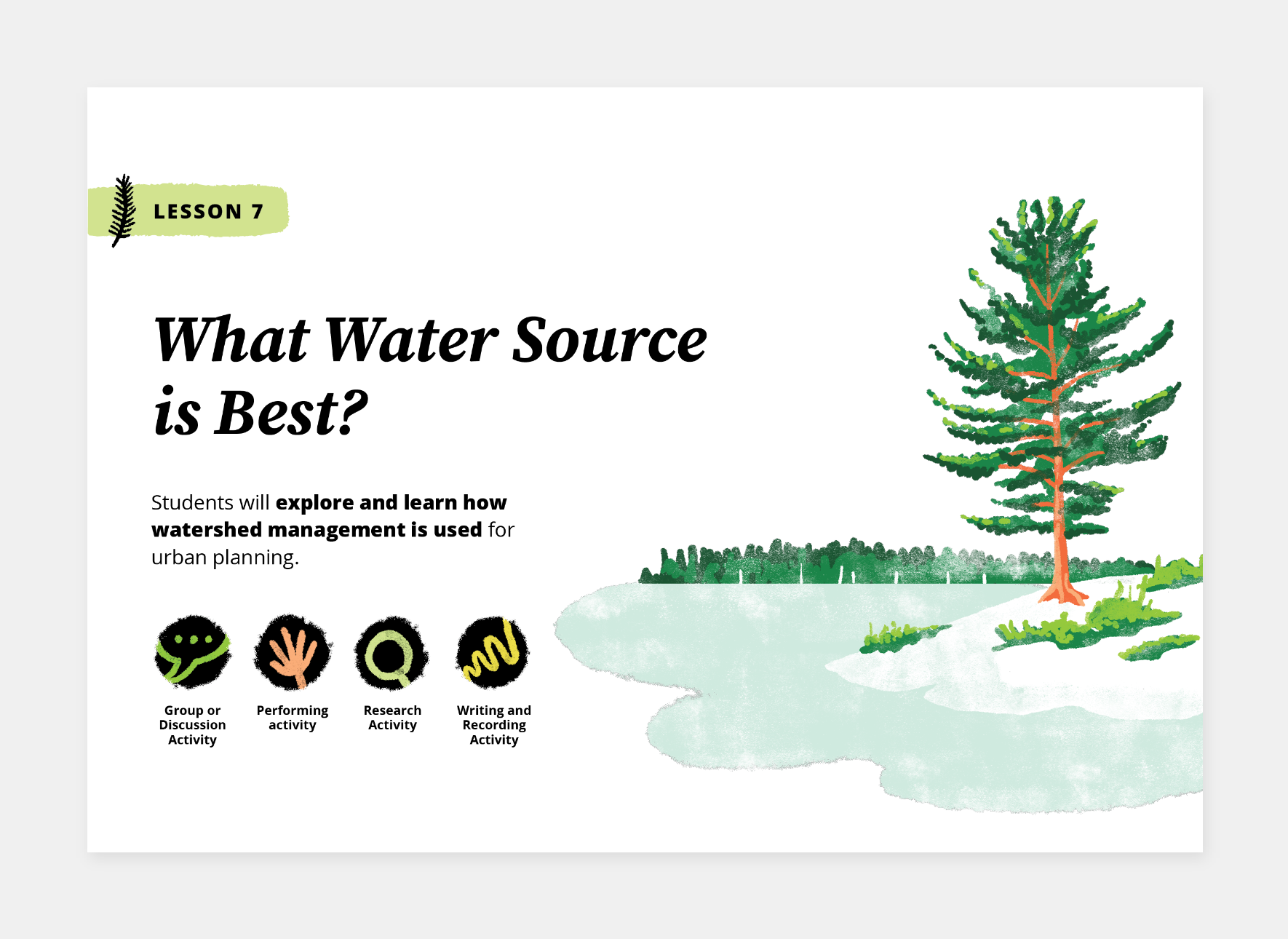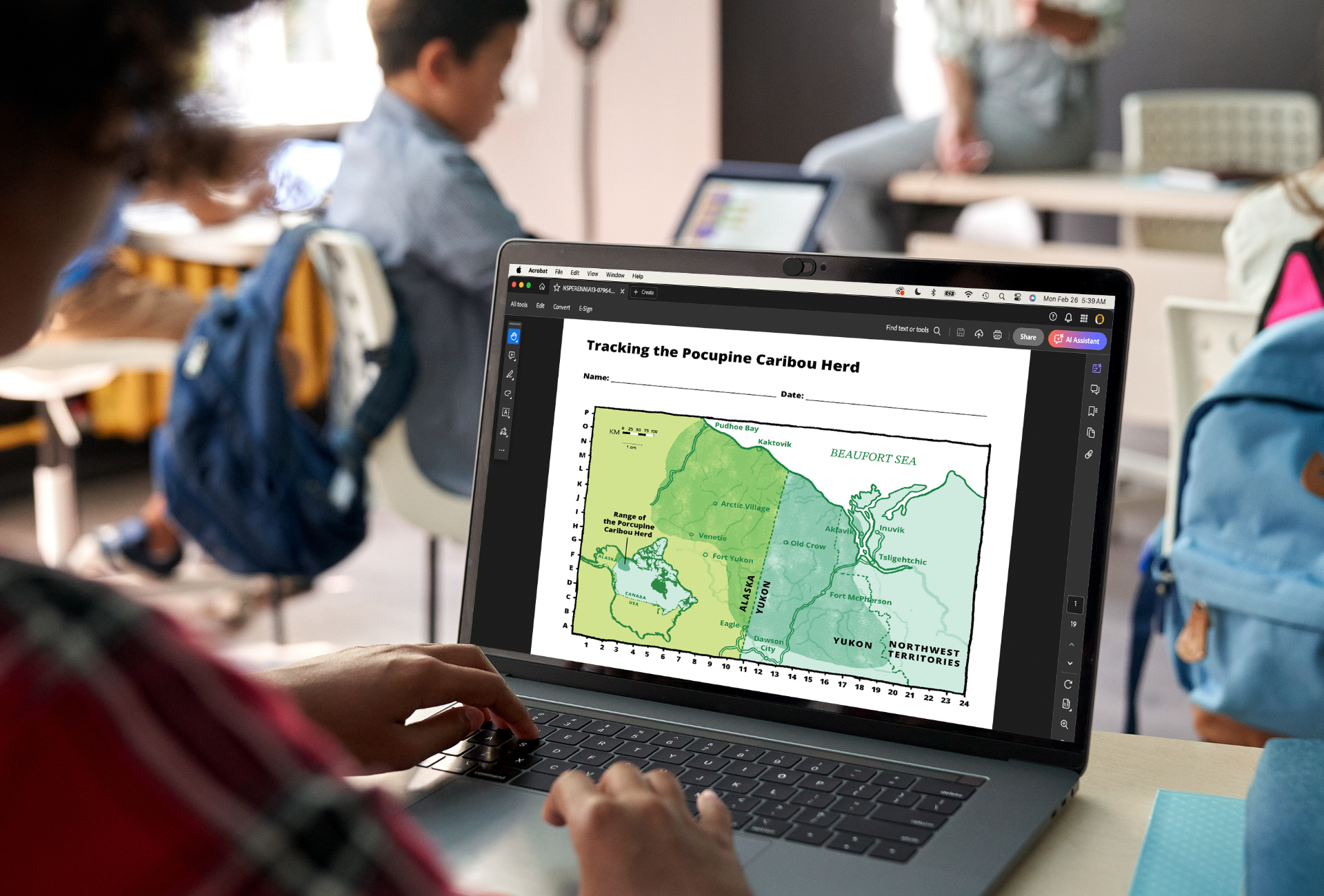
Canadian Institute of Forestry + Greg Dubeau — Graphic Designer
Teaching students the significant contribution of forests and their impact on our everyday lives.
Services: Graphic design, art direction, and illustration for print and screen
Product: Series of bilingual teaching kits for educators
Client
Canadian Institute of Canada – Institut forestier du Canada (CIF-IFC) is a not-for-profit, member-based organization. Founded in 1908, the CIF-IFC is the oldest forest society in Canada, serving as the national voice of forest practitioners representing foresters, forest technologists and technicians, ecologists, biologists, educators, and many others with an interest in forests and forestry.
cif-ifc.org →
Team
Natasha Machado
Jen Dickman
Steph Robinson
Tanisha Rajput
Sharon Siyao Yang
Catherine MacLeane
Greg Dubeau
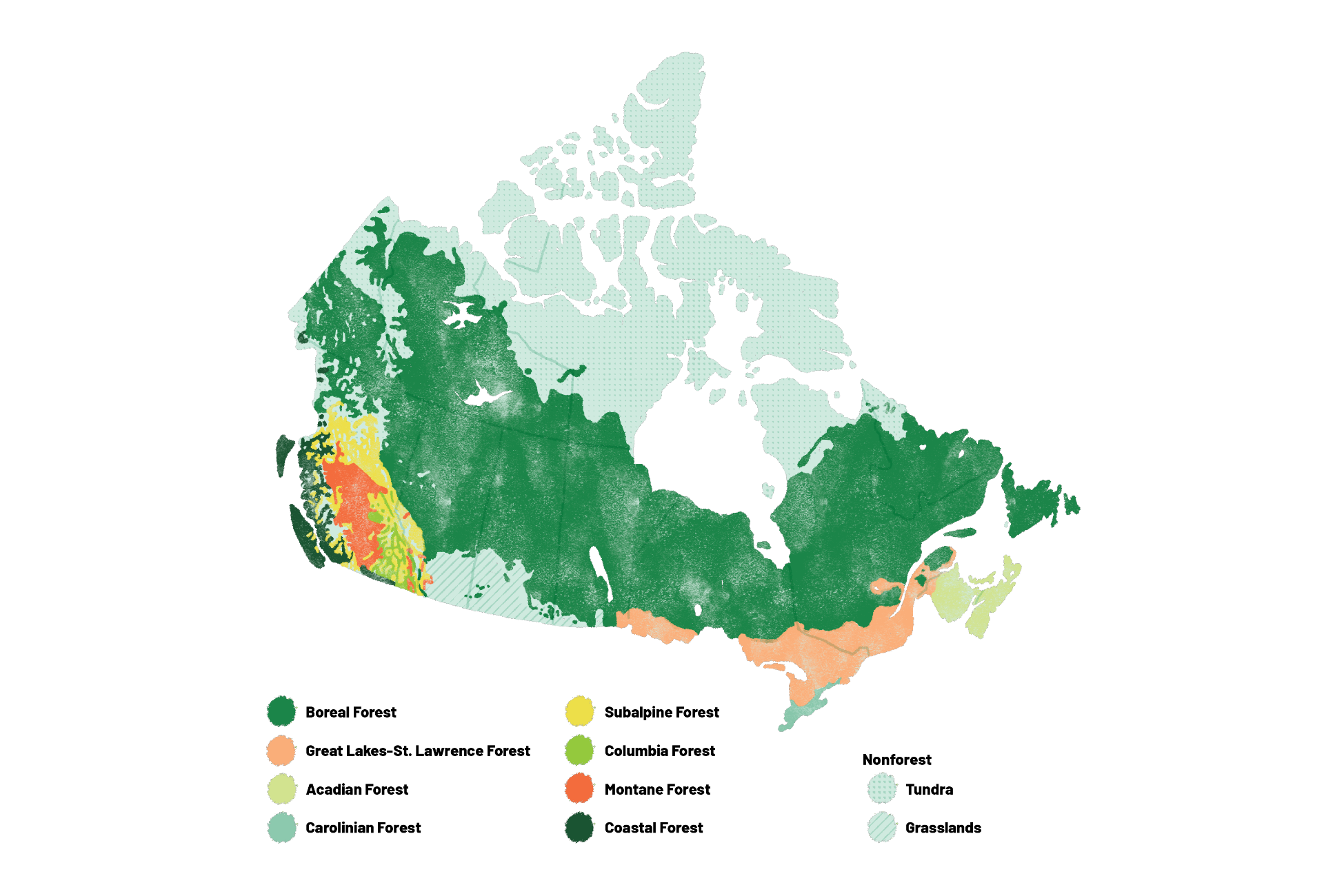
Canadian Institute of Forestry: A leader in developing forestry-related educational resources
The Canadian Institute of Forestry (CIF-IFC →) is the professional hub for Canadian foresters, forest sector workers, and forest enthusiasts. A a national not-for-profit organization, one of their primary objectives is to provide teachers and educators with tools and resources to help students understand the value of forests and the importance of their sustainable use.

Canada’s Forests Teaching Kit Series
The “Canada’s Forests Teaching Kit” series, originally published by the Canadian Forestry Association between 2000–2008, provides teachers with lesson plans in both English and French. These plans are designed to help students from grades 1–12 understand the vital role forests play in our lives. They highlight how healthy forest ecosystems result from complex interactions among soil, water, plant communities, wildlife, and climate. These lessons underscore the significant contribution of forests to the economy, society, culture, and environment, affecting our everyday lives.
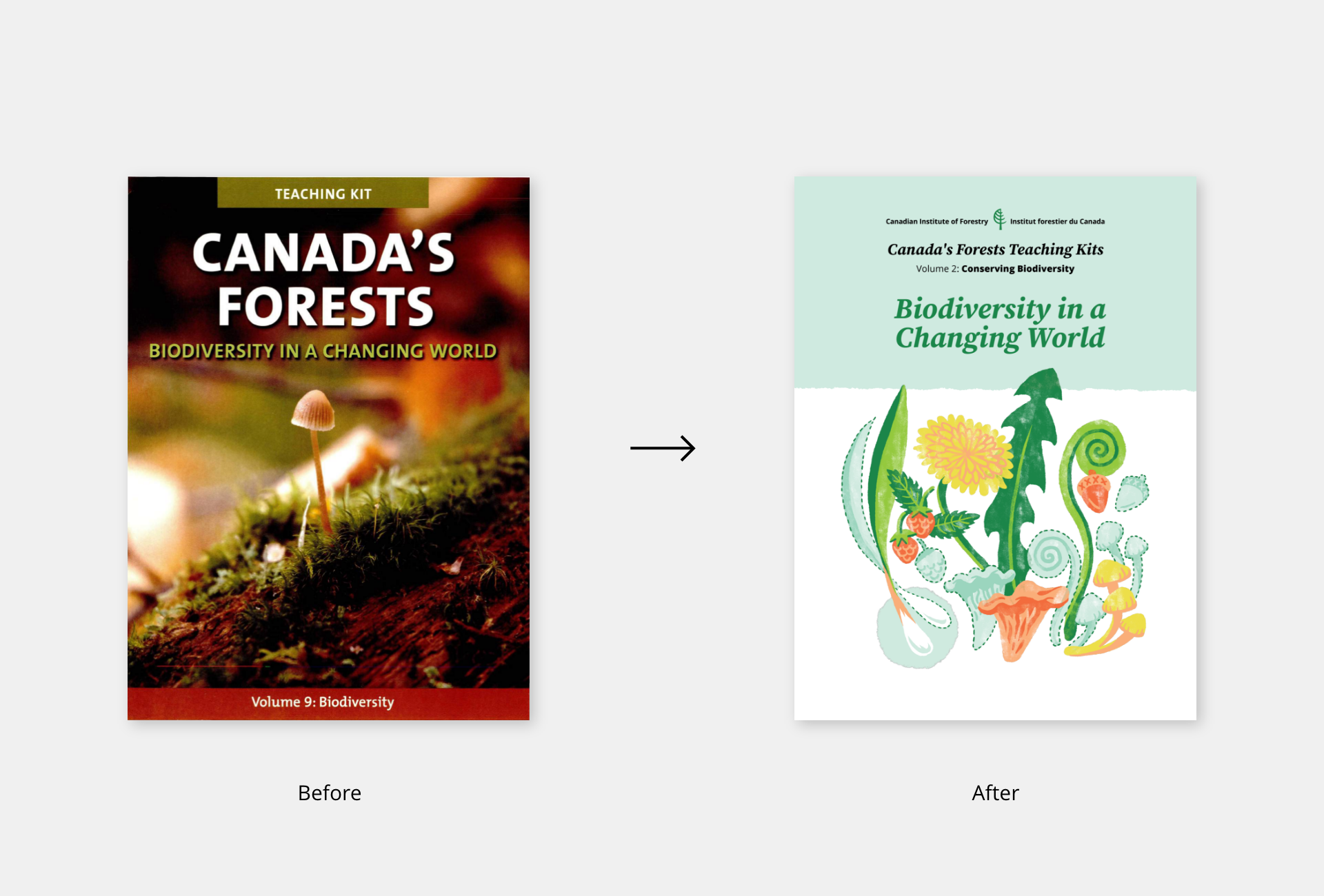



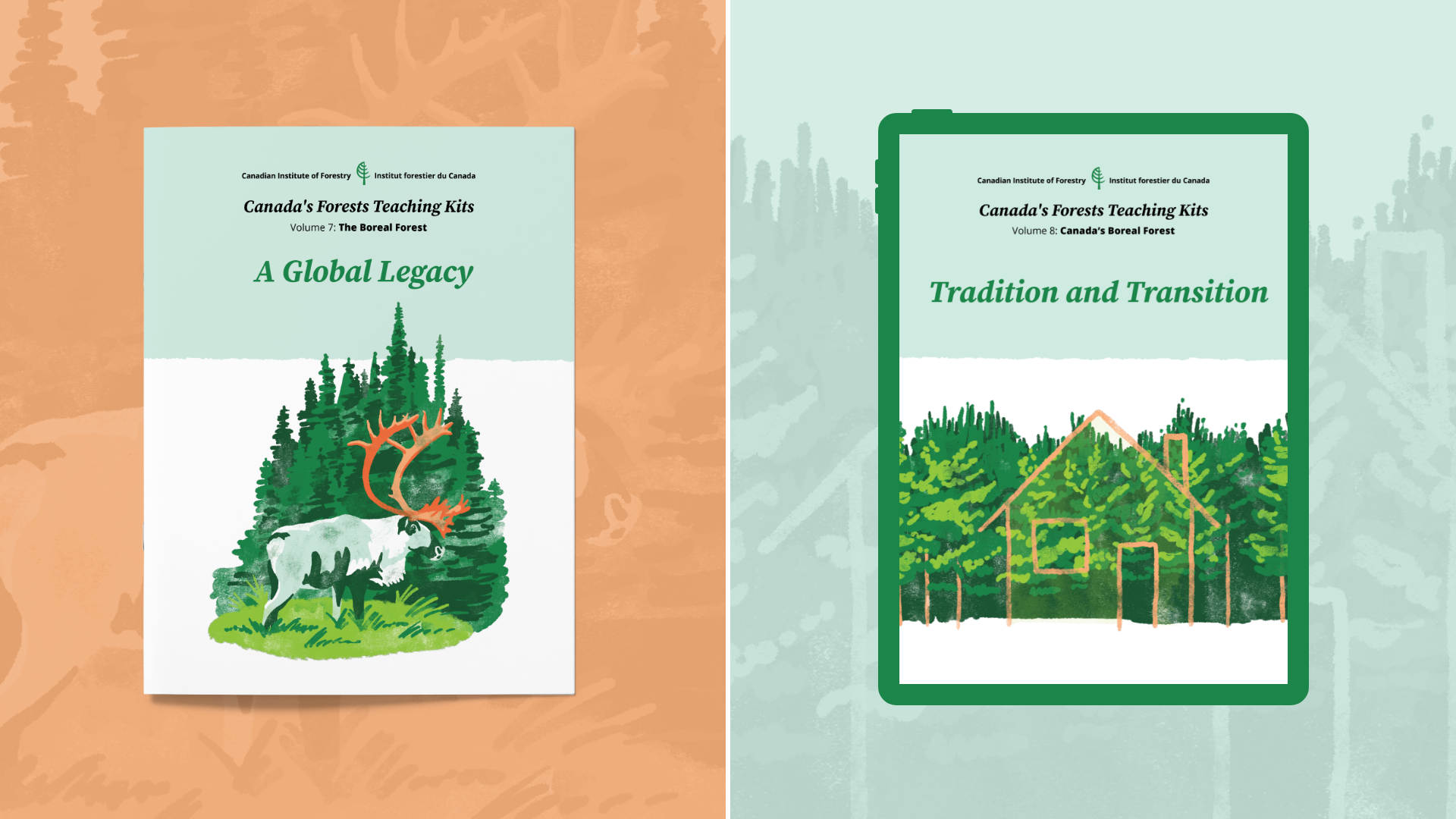

Extending the Canadian Institute of Forestry’s brand identity standards
As a heritage project, the previous guides were written and designed by multiple groups of people over the years. As a series, there was little continuity in the graphic formatting, art direction, and visual hierarchy of how the series was designed. Our key objectives were to update the content to touch on modern forest-related issues, redefine the creative direction by integrating the CIF-IFC’s updated brand standards, and apply illustration to unify the artistic direction across all teachings kits.
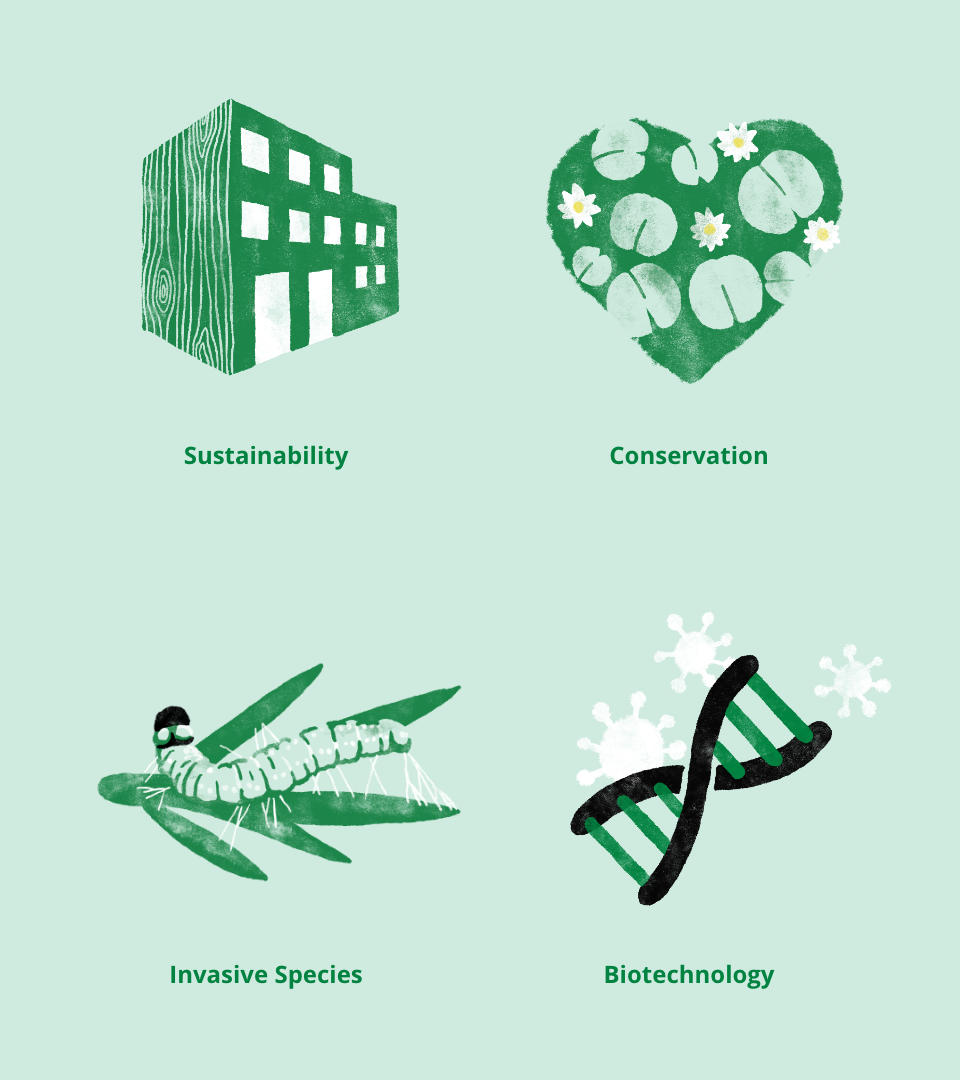
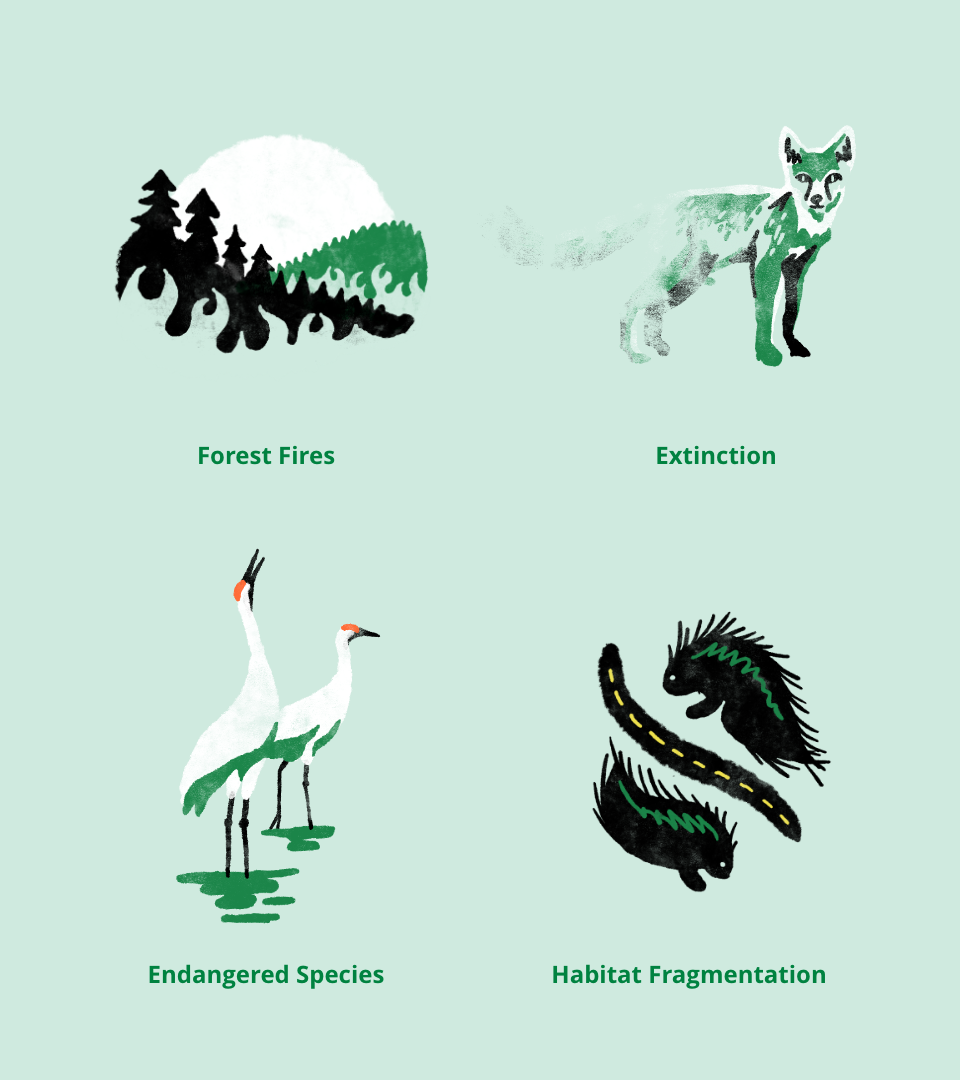


Canadian Institute of Forestry using illustration as a dynamic communication tool
Illustration was used instead of photography because it was important to maintain a consistent strategy for communicating complex ideas, whether it was through narrative devices such as metaphor and hyperbole, or by demonstrating complicated systems like the water cycle or global migration patterns of birds.
Utilizing a single illustrated style brought continuity to the breadth of subject matter covered across the series of teaching kits, as well as demonstrated how the CIF-IFC visual identity could be extended to reach a younger and more curious audience, opposed to their seasoned professional forest sector members.
